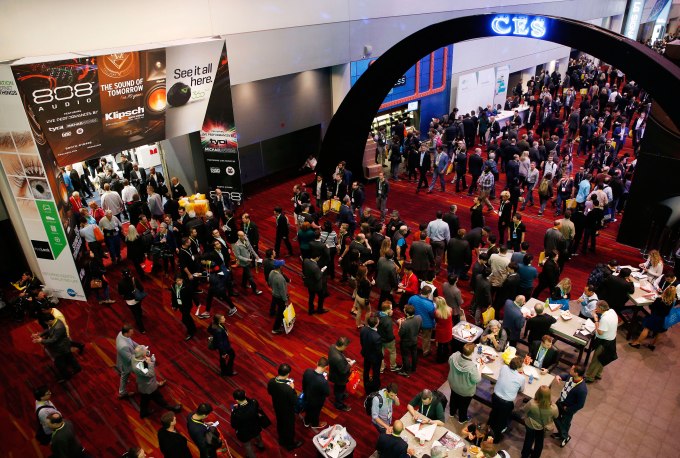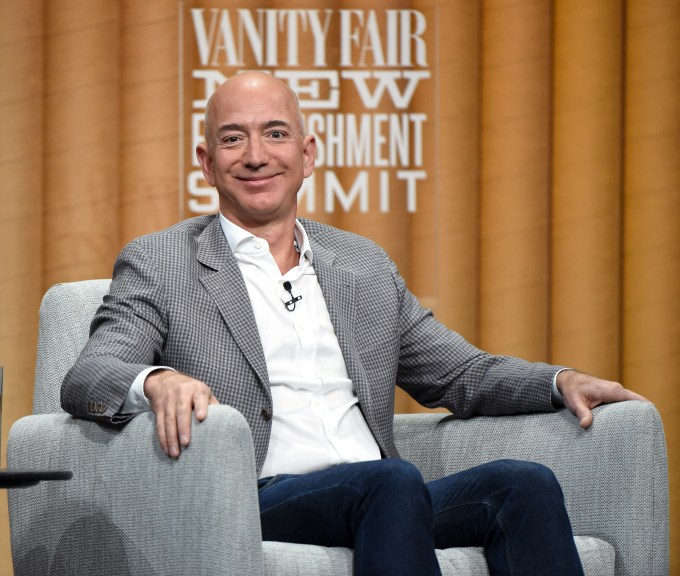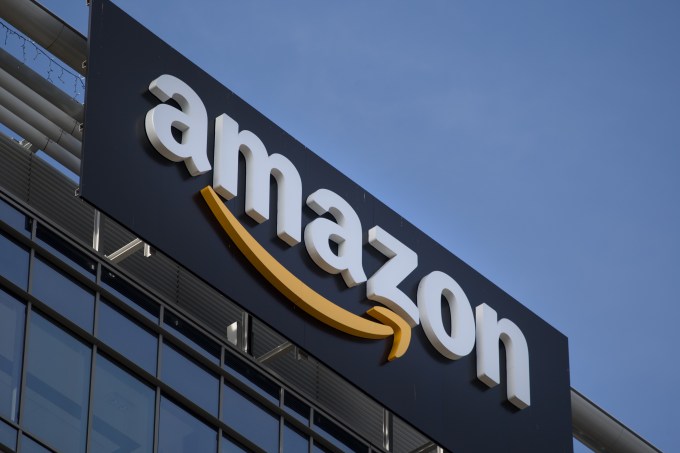It says that people don't understand polls. Even smart marketers get it wrong.
What do people think? There's a lot of confusion, much of it intentional, some spawned by a presumed fear of simple math, all of it worth clearing up.
A survey is not a poll is not a census. A census is what you get if you ask every single person what they think or who they are. There are only two reasons to have a census. Either you want each person to feel personally involved (hence an election) or you are keeping track of each person's answer. For example, if you're printing up t-shirts for the Frisbee team, you ought to do a census of the team to find out what size each person wants, then deliver each person the size they seek.
You could do a survey, which is merely a collection of answers from whomever cares enough to answer the survey. A survey is a useful tool for brainstorming, but it shouldn't be confused with what the group actually feels. Your lack of rigor in setting it up is repaid in a lack of precision in the data.
And a poll? A poll is a smart shortcut, a statistical method for replacing a census (asking everyone) with a very close approximation achieved by asking the minimum number of people required to get a useful answer. A properly done poll will get you an answer nearly as useful as an accurate census will, without the expense or the time.
It rarely makes sense to ask all of your customers about how they feel. You're wasting their time (and yours) by adding more entries into the database without those entries actually making the database any more accurate—part of the problem is that the only people who answer surveys are annoyed or have nothing better to do, and simply making a poll bigger doesn't make it better.
When big companies ask you to fill out a quick survey after talking to a customer service rep, they're not actually doing a survey. What they're doing is snooping on their customer service people, and your answers are directly connected back to each rep, so that person can be scolded (or worse) if they do a bad job.
A poll doesn't predict the future. The media has completely missed this point, again and again. If, on the day the iPhone was announced, you had done a well-designed poll of adults and asked, "Do you intend to ever buy a smartphone?" the yesses would have certainly been less than 5% of the result.
Of course, a decade later, that's turned out to be completely wrong. Was the poll in error?
No.
An accurate poll is a snapshot of right now, based on what's happening today. That's all. If outcomes end up being different a week or a year later, that's not the poll's fault, it's our mistaken belief that the future can be predicted.
To go one step further, the question that gets asked is as important as the answer. Try this at home: When you ask people a question, they rarely give you the straight up truth in their answer, especially when there are social factors at play. The very best polls combine not only the right math, but more important, the right question structure.
The magic of sample size. Let's say you had a bag of M&Ms. You know they come in six colors and you want to figure out the percentage of each that's in the bag. As long as the candies are distributed within the bag, it turns out that no matter how many are in the bag, whether it's a 2 pound bag or a 2,000 pound bag, all you need to do is randomly pull out 300 to 400 M&Ms. That's plenty. More samples won't dramatically increase the quality of this poll.
The purpose of the sample is to pick a random selection from a coherent group.
The key to this is understanding that sample size is relevant for any sized group that's consistent in its makeup. As soon as you can divide the group into buckets, you benefit by doing multiple samples.
Most of the well-done polls you hear about in public do not have a sample size problem. It's a red herring.
The power of bucketing. But what happens if you realize that there are more than one kind of M&Ms, and that different kinds have different color distributions? (This, it turns out, for mysterious reasons, is true. Almond M&Ms only come in five colors).
Well, you could take this into account and run much bigger sample groups, or you could get smart about sample size.
It turns out, for example, that women who ride Harley Davidson motorcycles want different things from them than men do. It also turns out that (I'm guessing about all the Harley stats here) perhaps 10% of the people who buy a Harley are women.
Given that, you could poll 300 women (the easy minimum) and then 2700 men (so you get the balance right). OR, you could get smart, and poll 300 women and 300 men (because every time you add a new person, it's really expensive). "But wait," you might say, "that's not right, because women are overrepresented."
So far, that's true. But after you figure out how women think, and then figure out how men think, you can weight the men's results in your final tally. If, for example, you discovered that women intend to buy a new Harley every two years, but men intend to buy one every six years, you could then report back that the average customer intends to buy a new Harley every five and a half years or so. (Said with full knowledge that it's dangerous to average averages, but in this case, it's correct.)
Confusion about polls is easy. And the more we try to make decisions using polls, the more careful we need to be about the structure and motivation of the poll itself.
But finding an accurate poll is pretty easy as well. Most pollsters (in private and in public work) are transparent about their methods, and the magic of statistics is that the math of how the poll is structured can be checked by others.
Too often, marketers do surveys, not polls, or bother everyone with a census, poorly done. Worse, they then use these results as an accurate prediction of the future, instead of a reliable snapshot of now.
It's the surveys that are so often wrong, deceptive and confusing. It's surveys ("no one I know believes that") that feel like they're accurate but rarely are.
And if we're going to challenge a poll, far smarter to challenge the questions ("that's designed to get the respondent to lie") or the flaws in sampling ("this requires all polled individuals to have a home phone, but of course, an entire generation of young people don't have one.")
But it makes no sense at all to throw out the results of polls we disagree with. The quality of the cars we drive, the efficacy of the medicines we take are all directly related to the very same statistical techniques that we use to run a poll. Ask the right questions to the right people and your snapshot is going to be helpful.
If you want to, be wary of polls. But be wary for the right reasons.
from Seth Godin's Blog on marketing, tribes and respect http://feeds.feedblitz.com/~/218539498/0/sethsblog~What-does-the-poll-say.html
 Microsoft revealed that partners including Asus, Dell, Lenovo and others are going to be building VR headsets for use with the Windows 10 Creators Update, and that these would start at $299, but we don’t know much beyond that about this third party-supported push into Windows VR. Microsoft told Polygon we’ll find out more in December, however, including possibly what a ranged lineup… Read More
Microsoft revealed that partners including Asus, Dell, Lenovo and others are going to be building VR headsets for use with the Windows 10 Creators Update, and that these would start at $299, but we don’t know much beyond that about this third party-supported push into Windows VR. Microsoft told Polygon we’ll find out more in December, however, including possibly what a ranged lineup… Read More Microsoft today open sourced its next-gen hyperscale cloud hardware design and contributed it to the Open Compute Project (OCP). Microsoft joined the OCP, which also includes Facebook, Google, Intel, IBM, Rackspace and many other cloud vendors, back in 2014. Over the last two years, it already contributed a number of server, networking and data center designs. With this new contribution,…
Microsoft today open sourced its next-gen hyperscale cloud hardware design and contributed it to the Open Compute Project (OCP). Microsoft joined the OCP, which also includes Facebook, Google, Intel, IBM, Rackspace and many other cloud vendors, back in 2014. Over the last two years, it already contributed a number of server, networking and data center designs. With this new contribution,…  Microsoft Outlook users on mobile will now have an easier way to schedule meetings from their smartphone, with the launch of a new scheduling assistant that helps you find a time that works for everyone. The feature, which is rolling out today to the iOS version of Outlook’s mobile app, will show your coworkers’ availability so you can quickly pick a date and time when everyone…
Microsoft Outlook users on mobile will now have an easier way to schedule meetings from their smartphone, with the launch of a new scheduling assistant that helps you find a time that works for everyone. The feature, which is rolling out today to the iOS version of Outlook’s mobile app, will show your coworkers’ availability so you can quickly pick a date and time when everyone…  Joey DeVilla is my blogging hero. He’s run his blog for most of two decades and he’s worked at Microsoft, Shopify, and Tucows. Most recently he’s taken on the mantle of evangelist for SMARTRAC, an NFC/RFID company. In this episode of Technotopia we talk about the cyclical nature of culture – how, for example, Nine Inch Nails sounds pretty tame to us now – and…
Joey DeVilla is my blogging hero. He’s run his blog for most of two decades and he’s worked at Microsoft, Shopify, and Tucows. Most recently he’s taken on the mantle of evangelist for SMARTRAC, an NFC/RFID company. In this episode of Technotopia we talk about the cyclical nature of culture – how, for example, Nine Inch Nails sounds pretty tame to us now – and…  Microsoft’s future is three-dimensional. Up to now, we’ve seen the company embrace the notion in dribs and drabs, through the HoloLens and its work with Minecraft. But earlier this week, at an event in New York City, the company went all in, making 3D content creation a core principle of both its upcoming Windows 10 Creators Update and hardware like the Surface Studio. Asked how…
Microsoft’s future is three-dimensional. Up to now, we’ve seen the company embrace the notion in dribs and drabs, through the HoloLens and its work with Minecraft. But earlier this week, at an event in New York City, the company went all in, making 3D content creation a core principle of both its upcoming Windows 10 Creators Update and hardware like the Surface Studio. Asked how…  The new Surface Book got lost in the shuffle this week. Understandably so. It did, after all, get third billing at Microsoft’s own event in New York this week, owing to the flashiness of the Surface Studio and Windows 10 Creators Update and all of the 3D content creation that brought with it. And then, of course, Apple happened. But Microsoft’s not one to give up the spotlight for…
The new Surface Book got lost in the shuffle this week. Understandably so. It did, after all, get third billing at Microsoft’s own event in New York this week, owing to the flashiness of the Surface Studio and Windows 10 Creators Update and all of the 3D content creation that brought with it. And then, of course, Apple happened. But Microsoft’s not one to give up the spotlight for…  Amazon announced today it’s bringing a version of its Prime membership program to customers in China, which will include free, cross-border shipping from the Amazon Global Store as well as no minimum, free domestic shipping, the company says. The service, which will compete with local rivals like Alibaba and JD.com, will cost 388 yuan ($57.23) per year after the first year, which will be…
Amazon announced today it’s bringing a version of its Prime membership program to customers in China, which will include free, cross-border shipping from the Amazon Global Store as well as no minimum, free domestic shipping, the company says. The service, which will compete with local rivals like Alibaba and JD.com, will cost 388 yuan ($57.23) per year after the first year, which will be…  Microsoft expects to close its $26.2 billion acquisition of LinkedIn by the end of this year — pending some final regulatory approvals — and so, in light of that, today LinkedIn posted a very basic earnings report for Q3. It’s also skipping the customary analyst call and is no longer providing financial guidance for the coming quarter. Still, the company reported growth in…
Microsoft expects to close its $26.2 billion acquisition of LinkedIn by the end of this year — pending some final regulatory approvals — and so, in light of that, today LinkedIn posted a very basic earnings report for Q3. It’s also skipping the customary analyst call and is no longer providing financial guidance for the coming quarter. Still, the company reported growth in…  That record scratch you just heard came from thousands of designers and R&D specialists who suddenly have to remake 3D models of laptops, phones and desktops. That sigh is coming from hundreds of programmers stepping up their new interfaces and that ripping noise is myriad press releases getting torn up and rewritten. After all, it’s almost CES time again and Apple and Microsoft…
That record scratch you just heard came from thousands of designers and R&D specialists who suddenly have to remake 3D models of laptops, phones and desktops. That sigh is coming from hundreds of programmers stepping up their new interfaces and that ripping noise is myriad press releases getting torn up and rewritten. After all, it’s almost CES time again and Apple and Microsoft…  Amazon significantly disappointed investors when it posted third quarter earnings after the bell Thursday. With an adjusted earnings per share of 52 cents, this was well beneath the expected 78 cents. The stock quickly fell at least 6% in after-hours trading. Revenue of $32.7 billion was in-line with what Wall Street was expecting. This came as a surprise because in recent years, the…
Amazon significantly disappointed investors when it posted third quarter earnings after the bell Thursday. With an adjusted earnings per share of 52 cents, this was well beneath the expected 78 cents. The stock quickly fell at least 6% in after-hours trading. Revenue of $32.7 billion was in-line with what Wall Street was expecting. This came as a surprise because in recent years, the…  Amazon is continuing its efforts to crack down on fraudulent reviews across its site with new lawsuits aimed at two U.S. sellers, and one from the E.U., which claim to have evidence of customer review abuse. That is, the defendants created fake reviews for their products, which could have influenced customers’ buying decisions. These suits, like those that preceded them, are meant to…
Amazon is continuing its efforts to crack down on fraudulent reviews across its site with new lawsuits aimed at two U.S. sellers, and one from the E.U., which claim to have evidence of customer review abuse. That is, the defendants created fake reviews for their products, which could have influenced customers’ buying decisions. These suits, like those that preceded them, are meant to…